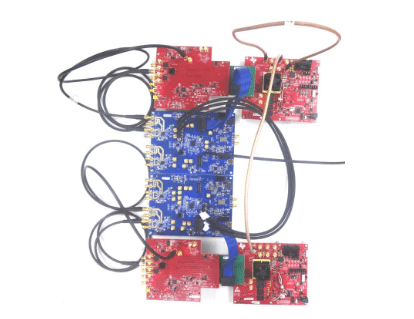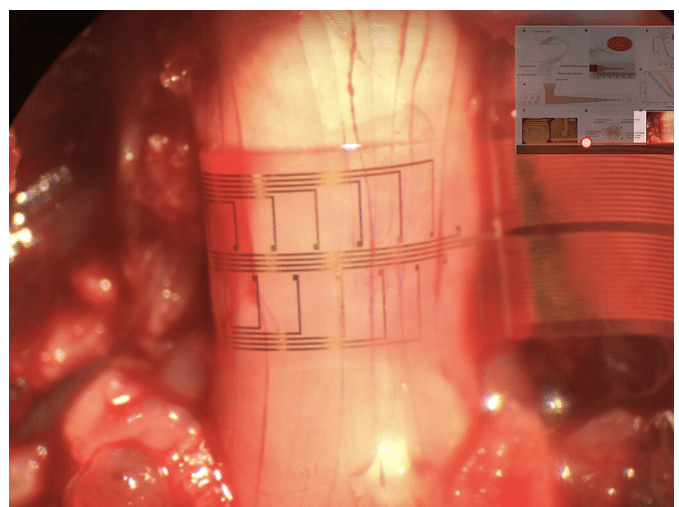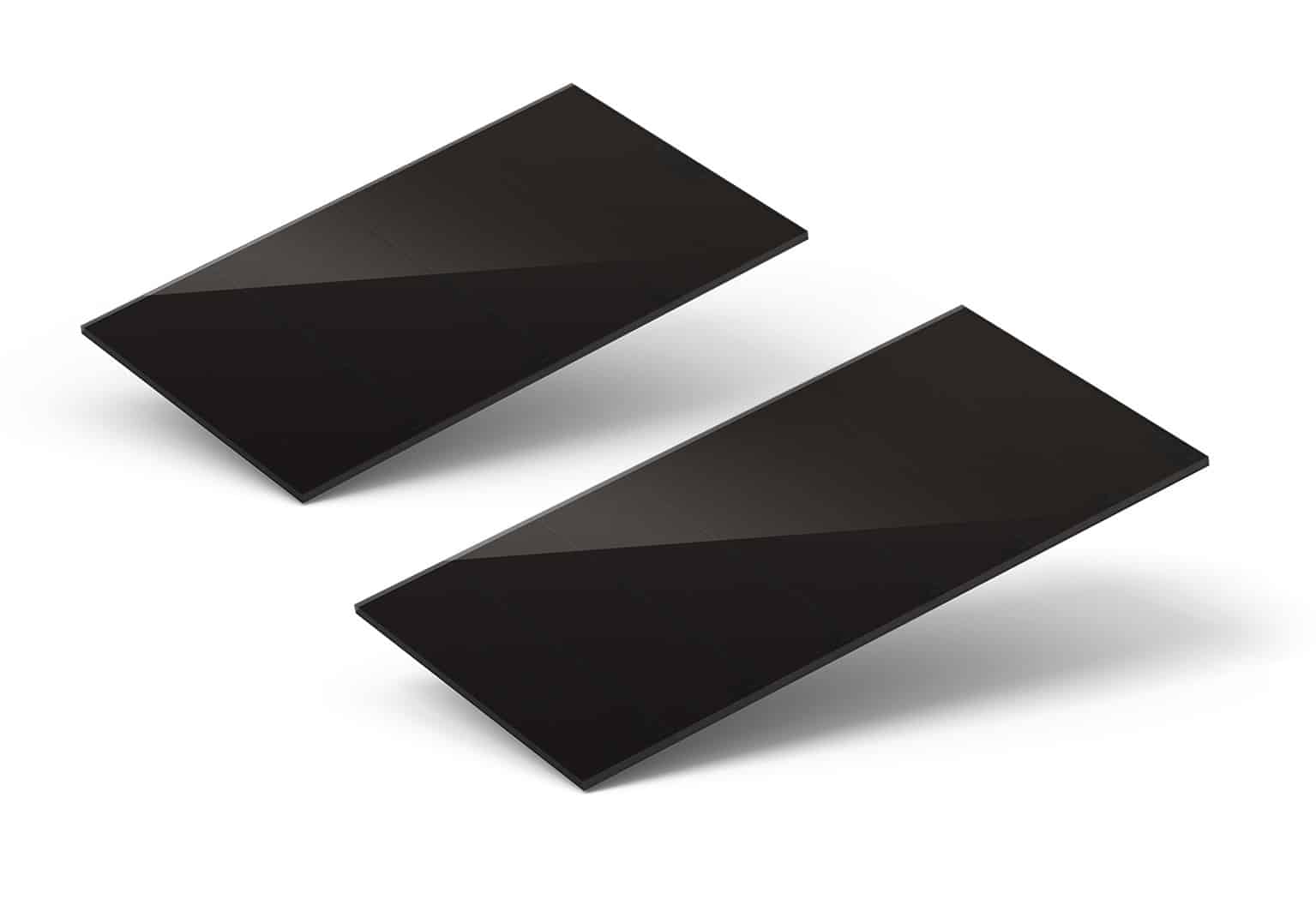RF signals historically are measured using spectrum analyzers, at least that was before oscilloscopes offered sufficient bandwidth for those measurements. With oscilloscope bandwidths over 100 GHz, RF measurements are no longer the exclusive domain of the spectrum analyzer; this is especially true for pulsed RF measurements, where the time domain measurements of an oscilloscope have several advantages. This article will focus on the time measurements of pulsed RF signals.
Many devices use pulsed RF signals. The obvious ones are echo-ranging systems like radar. Additionally, nuclear magnetic resonance (NMR) spectrometers and magnetic resonance imaging (MRI) systems use pulsed RF. Even automotive keyless entry systems use pulse-modulated RF signals.
Pulsed RF signals
Pulsed RF signals are created by gating a continuous wave (CW) RF source, as shown in Figure 1.
Figure 1 Pulsed RF signals can be generated by gating a CW RF source using a switch controlled by a gate signal pulse train. Source: Arthur Pini
The carrier source is a continuous wave oscillator. It is gated by a switch driven by the gating signal pulse train. This is a multiplication operation with the carrier multiplied by the gate signal. When the gating signal is high, the switch outputs RF; when low, the output is zero. The 350 MHz carrier is shown in the upper left grid. A horizontally expanded zoom view (left center grid) shows the details of the carrier waveform. The gating signal (lower left grid) is a logic signal with a zero state at 0 volts and a 1 state of 1 volt. The gate output (upper right grid) shows the RF bursts at periodic intervals related to the gate signal state. A zoom view of one burst (center right grid) provides greater detail of a single burst. Another view with a greater zoom magnification (lower right grid) shows the turn-on details of the pulsed RF signal.
Measurement parameters, just under the display grids, read the frequency (P1) and amplitude (P2) of the carrier as well as the frequency (P3) and pulse width (P4) of the gating signal.
The frequency spectra of pulsed RF signals
Looking at the carrier, gate signal, and gated carrier in the frequency domain provides insight into the modulation process. Oscilloscopes view the frequency domain using the fast Fourier transform (FFT) providing tools similar to a traditional spectrum analyzer. The signals and the FFTs of the three signals are shown in Figure 2.
Figure 2 The three component signals carrier, gating pulse train, and pulse RF output and their FFTs provide insights into the modulation process. Source: Arthur Pini
The carrier (upper left grid), being a sine wave, has an FFT (upper right grid) consisting of a single spectral line at the frequency of 350 MHz. The gate signal (center left grid) is a train of rectangular pulses. The FFT of the gate signal takes the form of a sin(x)/s spectrum. The maximum amplitude occurs at zero Hz making this a baseband spectrum anchored at 0 Hz or DC. The peaks in the spectrum are spaced at the pulse repetition frequency (PRF) of 50 kHz, measured using the relative cursors on the FFT of the gate signal. The cursor readout, under the Timebase annotation box, reads the absolute cursor positions and the frequency difference of 50 kHz. The sin(x)/x response has a periodic lobe pattern where the nulls of the lobes occur at intervals equal to the reciprocal of the gate pulse positive width. Since the positive width of the gate pulse is 3.52 ms, the nulls occur every 283 kHz. These nulls are a little harder to measure with cursors as the spectral peaks every 50 kHz, which does not have 283 kHz as an integral multiple, tend to obscure the nulls.
The gated RF carrier results from multiplying the carrier by the gate signal. The state of the gate signal determines the output of the gated RF carrier signal. When the gate signal is one, the carrier appears at the gated carrier output. Multiplication in the time domain has a corresponding mathematical operation of convolution in the frequency domain. The result of the convolution operation on the spectra of the carrier and gate signal is shown in the FFT of the gated carrier. The baseband sin(x)/x function of the gate signal is mirrored above and below the carrier spectrum as the upper and lower sidebands of the carrier frequency.
Pulsed RF timing measurements
The timing measurement of pulsed RF signals begins with the pulse bursts. In most of the applications cited, the PRF, pulse width, and duty cycle are of interest. The characteristics of the burst envelope, including the rise time, overshoot, and flatness, may also be desired. These measurements can’t be made directly on the pulse RF signal. To make measurements on the gated carrier, the signal has to be demodulated to extract the modulation envelope and remove the carrier. The demodulation process varies from oscilloscope to oscilloscope, depending on the math processes available. This example used a Teledyne LeCroy oscilloscope which offers three ways to demodulate the gated carrier signal. The first method is to create a peak detector using the absolute value math function and a low pass filter. The second method is to use the optional demodulation function. This math function provides demodulation of AM, FM, and PM signals. The final technique is to use the oscilloscope’s ability to embed a MATLAB script into the math processing chain and use one of the MATLAB demodulation tools. This is also an optional feature in the oscilloscope.
Comparing demodulation processes
Comparing the results for these three methods is interesting. Since the first method can commonly be done with most oscilloscopes that offer an absolute value math function and low pass filtering. The peak detector method was used in this example and the results are shown in Figure 3.
Figure 3 Comparison of the amplitude demodulated signal of the gated carrier and the gated carrier, with measurements of the demodulated envelope from the peak detector based on the absolute math function. Source: Arthur Pini
Using the dual math function, the absolute value of the gated carrier was calculated. The second math function is a low pass filter. The low pass filter cutoff frequency has to be less than the 350 MHz carrier frequency signal, and the filter roll-off has to be sharp enough to suppress the carrier. In this example, a 6th-order Butterworth low pass filter with a cutoff frequency of 125 MHz and a transition width of 100 kHz was used. This oscilloscope has low pass filters available as enhanced resolution (ERES) used for noise suppression as well as a digital filter option. Either low pass filter source can be used. The goal of this operation is to have the demodulated envelope track the peaks of the gated carrier.
The detected envelope of the RF pulse is shown as trace F3 in the lower left grid. Horizontal zoom displays in the upper and lower right grids show the match of the demodulated envelope (blue trace) to the RF burst at two different horizontal scales. The overlaid traces in the lower right grid provide the best view for evaluating the performance of the demodulator. Adjust the low pass filter cutoff to obtain the best fit.
Measurement parameters P6 through P10 read the PRF, width, duty cycle, positive overshoot, and rise time of the demodulated envelope.
The same measurement made using the oscilloscope’s demodulation function is shown in Figure 4.
Figure 4 Measurement of the pulsed RF modulation envelope using the oscilloscope’s optional demodulation math function and comparison with the pulsed RF signal. Source: Arthur Pini
The demodulation function was set up for AM demodulation. The carrier frequency and measurement bandwidth have to be entered. The result shown here is for a bandwidth of 100 MHz.
The same measurements are performed with very good agreement with the peak detector method. Vertical scales differ due to the different processing operations. Since the parameters being measured use relative amplitude measurements, no effort has been made to rescale the vertical data to a common scale.
The third method mentioned was the use of a MATLAB script in the oscilloscope’s signal path to demodulate the RF pulse signal. This is shown in Figure 5.
Figure 5 Example of using a MATLAB script to demodulate the Pulsed RF signal. The MATLAB script used is shown in the popup. Source: Arthur Pini
The MATLAB demod function, available in the MATLAB signal processing toolbox, is used to demodulate the pulsed RF. It is a very simple two-line script requiring the entry of the carrier frequency and oscilloscope sampling rate. The results are consistent with the other methods where the primary difference occurs in the rise time measurement is due to the different filters used in each of the different processes. Comparing the rise time measurements of the demodulated envelope to the rise time of the gate signal, the maximum variation is about 1 % from the rise time of the gate signal. The variation among the three demodulation methods is about 0.2 ns of the nominal 22.67 ns rise time. These three available demodulation methods produce nearly identical results in reading the timing parameters of a pulse RF signal.
Characterizing pulsed RF signals
The oscilloscope is well matched to the task of characterizing pulsed RF signals. It can render the signals in either the time or frequency domain permitting analysis in both domains. The ability to accurately demodulate the pulsed RF signals enables measurement of the timing characteristics of the pulsed RF signals.
Arthur Pini is a technical support specialist and electrical engineer with over 50 years of experience in electronics test and measurement.
Related Content









